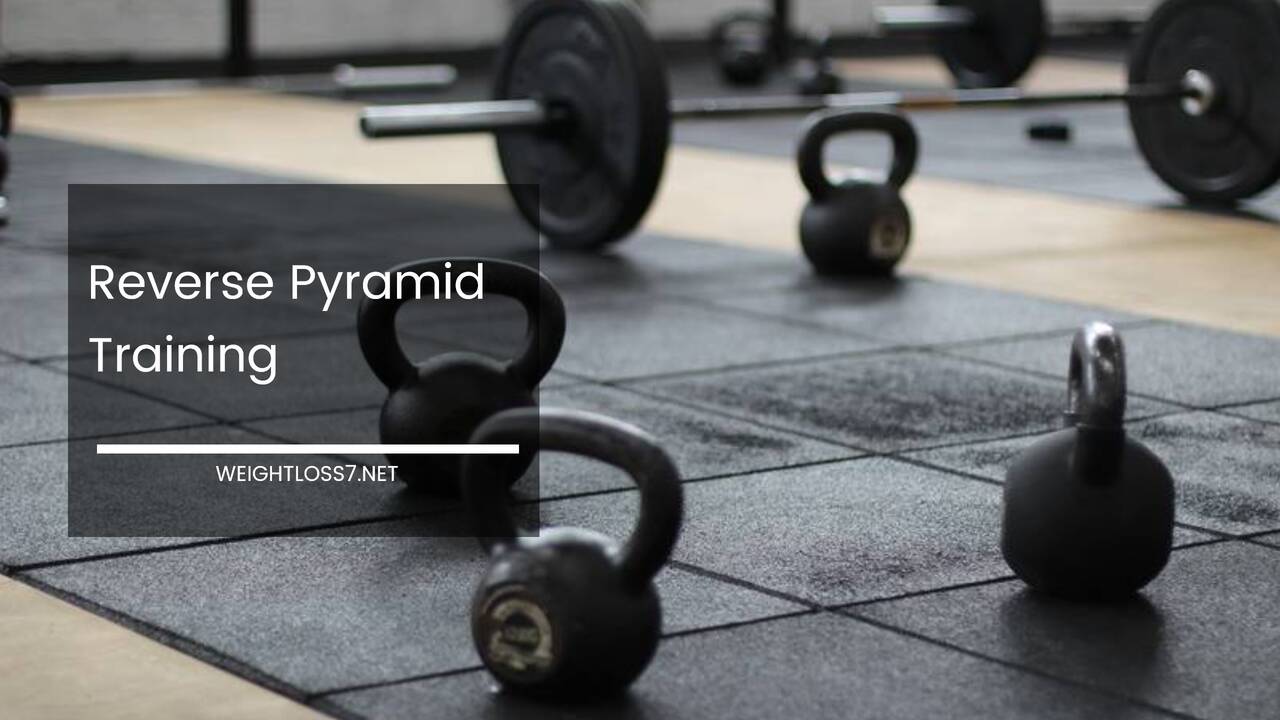Reverse Pyramid Training – The Flip You May Want to Know About

Reverse Pyramid Training breaks the chains of plateaus resulting from the conventional Pyramid Training structure of many workout routines, where while carrying out a pyramid training workout, the lightest weight of a set for an exercise is done first with the most repetitions, and the heaviest and most challenging weight is done last, after moderate and sub-maximal sets have already been completed.
In Pyramid Training, once the lightest weight of a set is complete, more weight is added, and the exercise is completed with fewer repetitions.
This eventually reaches the point to where the last set for a particular exercise has you lifting the most weight of the entire set, with the least repetitions, after completing most of the sets for that given exercise.
Logically, utilizing a large amount of energy and then approaching the most difficult challenge of a workout seems like a lesser choice than warming up, and then approaching the most difficult challenge of a workout with fresh focus and a solid amount of energy.
In a Reverse Pyramid Training Workout, the heaviest weight of a set is completed first, with the least repetitions of the set, and as the rest of the sets begins and ends, weight is taken off, and repetitions are added, until the final set, with the lightest weight, and most repetitions.
The idea behind “flipping” the pyramid upside down is to maximize focus, energy, efficiency, and control fatigue. By adding the majority of repetitions and sets after the max effort set, muscular fatigue is minimized and bodily resources maximized.
Additionally, every set following the heaviest set de-loads weight, whereas in a normal pyramid routine, weight is loaded “all the way up.”
Reverse pyramid training can be completed in various repetition ranges, depending on expertise, ability, and personal modification. RPT (Reverse Pyramid Training) can be completed in a 3-5 rep range, in a 6-10 rep range, an 8-12 rep range, or one that is especially tailored.
As repetition ranges are lowered, it is assumed weights used are going up, while in the higher rep range, weights would be lighter than constant max and near max loads.
All exercise requires a proper form; I would only add that proper form is especially important in the heavier weight, lower repetition sets, where loads experienced are likely new and more challenging than other loads throughout the workout.
Example:
- Tailored and proper dynamic warm-up with weights < or = 60% of max
- Dumbbell Chest Press, 3 Sets, 6-10 Repetitions
- First Set, 80 Lbs, 6 Repetitions
- Second Set, 70 lbs, 8 Repetitions
- Third Set, 60 lbs, 10 Repetitions
- Rest would be 2-3 minutes or 3-5 minutes between sets and exercise, depending on max or sub-max effort and fatigue
This is of course, just an example, respective weights and rep ranges require research, thought, and trial.
A warm-up is completed prior to engaging in a reverse pyramid set; compound exercises at low intensity (<60%) seem to do the trick for me, but as always recommended, get professional guidance for form and base numbers on various exercises. Mark Sisson, of The Primal Blueprint, has good advice on warm-ups, where he advocates an intuitive and dynamic approach, explained with research.
With each consecutive week in a RPT routine, an increase in weight of the first work set-the first set after the warm-up-is a realistic and achievable goal.
That doesn’t mean 20 pounds needs to be added every week to the first set of each exercise, only that the goal is to increase the amount of weight in each respective exercise at a pace which proper form and controlled carry-out occur.
Additionally, since the demand of RPT is high, beginners, intermediates, and even more advanced lifters incorporate different routines into the same workouts, they are utilizing RPT within.
Because maximal weights are reached and often new one achieved with RPT, changing the makeup of every workout to an RPT style is ill-advised.
Demanding routines will let you know how much they are demanding, and pushing against reason is a losing battle.
Certain percentages of routines can be dedicated to RPT, or certain workout days.
For example, I may use a Reverse Pyramid structure for two of the four exercises I am completing in today’s workout, taking the same amount of rest and carrying the routine out normally, while for the other two exercises, I am super-set at stable weights, or use a normal pyramid structure.
Alternatively, I may do today’s exercises in an RPT fashion, but utilize a different structure or type of workout in my next workout.
Because Reverse Pyramid Training offers an alternative to the average structure of a workout routine, adopting RPT may offer a way of breaking through plateaus and renewing interest in a routine.
Additionally, because RPT offers a unique method of approaching the toughest set and weight for a respective exercise, maximum focus can be delivered to maintain form while maximum energy can be applied to achieving a new weight or carrying out a challenging and good set.
Reverse Pyramid Training is most definitely an interesting and promising method of challenging the body. For those who are bored, or who have plateaued, or have no general routine and are looking for order, I recommend further research into RPT.
Guest Post: This article was published as part of the Guest Post Series. Guest posts come from leading experts in weight loss, health, and fitness. The series tries to bring a diverse range of perspectives on the critical issues of our time. The views expressed in this article are solely that of the author and do not necessarily represent the views or opinions of WeightLoss7.Net.

















